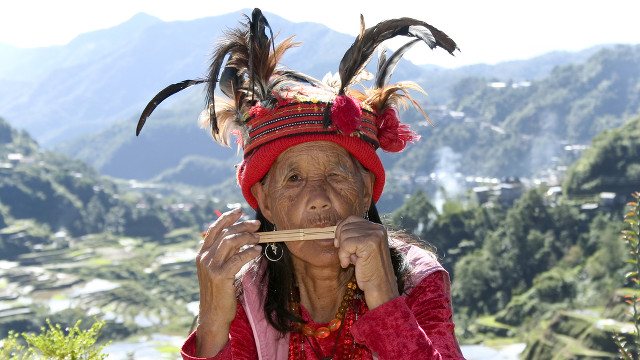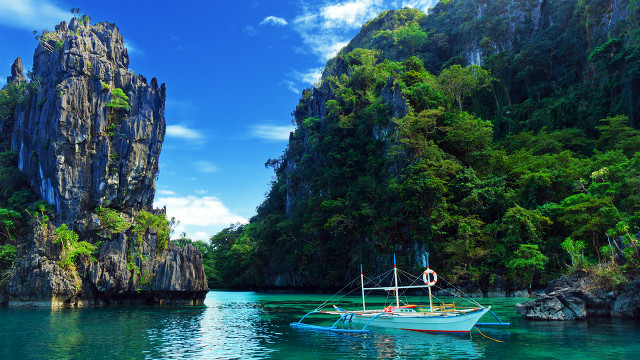SUMMARY
This is AI generated summarization, which may have errors. For context, always refer to the full article.

MANILA, Philippines – Local communities in charge of maintaining protected areas will now get a helping hand from a new law that gives them better access to funding.
Republic Act 10629, signed into law by President Benigno Aquino III last September 26, retains 75% of income generated by protected areas (PAs) with the Protected Areas Management Board (PAMB), an administrative body composed of all the local government units and tribal communities in charge of regulating the protected area.
Income generated by protected areas comes from entrance fees paid by tourists, payment for the lease of areas used by tourism concessions, contributions from industries and facilities directly benefitting from the protected area (such as resorts and cell sites of telecommunication companies) and taxes for the legal sale and export of flora and fauna found in the protected area.
The law is an amendment of the National Integrated Protected Areas System (NIPAS) Act of 1992 which previously directed that 100% of income generated by the protected area goes straight to the national treasury. The revenue only goes back to the PAMB when it is released by the Department of Environment and Natural Resources (DENR). The funds are meant for the maintenance of the protected area.
But the old process was tedious and suffered from delays due to layers of bureaucracy, said Protected Areas and Wildlife Bureau (PAWB) chief Theresa Mundita Lim.
This has led to poorly maintained and weakly promoted protected areas because the PAMBs in charge of them are unable to get the funds they need. Because of this, many PAMBS are unmotivated and inactive. Though 90% of the 240 protected areas nationwide have their own PAMBS, only around 40% of these PAMBs are active.
READ: The trashing of Mount Apo
The bunching up of all the revenue into the Integrated Protected Areas Fund or IPAF held by the national government also led to PAMBs competing against one another for priority funding, said Lim.
Motivated PAMBs
With the amendment, Section 61 of the NIPAS Act now reads:
An IPAF Governing Board shall be established to administer the Fund and to decide on fund allocation among the protected areas. This shall include the creation of subfunds or accounts for: (i) each protected area to receive revenues generated by that area or contributions specified for that area; and (ii) contributions or other funds specified for a particular activity that may involve more than one area. Allocations for any protected area shall be managed by its respective PAMB subject to guidelines established by the Board. Provided, that at least seventy-five percent of the revenues generated by a protected area shall be retained for the development and maintenance of that area and utilized subject to the IPAF Board guidelines cited above, with the balance being remitted to the Central IPAF Fund.
Lim calls the amendment an “exciting and much-awaited development.”
“We can expect that the local communities will be more encouraged to make income-generating projects. With the 75% automatic retention, there will be revolving funds for ecotourism projects and capacity-building. There will be lesser dependency on the national government,” she said.
The measure lets local communities reap the fruits of their labor when they see that their efforts to rehabilitate and promote their protected area directly translate into more funding.
The PAWB will monitor how the PAMBs use the retained income, assured Lim. Guidelines will be set to ensure the funds are allocated for the conservation and promotion of the protected areas.
Boosting ecotourism
Another plan is in the works to boost revenue from protected areas which have huge potential as tourism destinations.
PAWB has submitted a proposal to DENR Secretary Ramon Paje to increase revenues from the lease of establishments and businesses located within protected areas, Lim said.

Under the current guidelines in the Special Lease Agreement Within Protected Areas, PAMBs can only charge business establishments–such as resorts, restaurants, extreme sports facilities and theme parks–3% of the zonal value of the land.
The revised guideline charges 3% based on the zonal value of the nearest commercial area plus a 1% premium and 1% for the development of the land.
“Based on our computations, if this is approved we stand to earn up to P300 billion annually from protected areas just from tourism activities,” said Lim.
This is a big jump from the P100 million the protected areas are currently raking in.
And though the higher prices may scare away some investors, Lim sees this as a good thing.
“We discourage ‘non-serious’ investors. We are able to weed out investors so that only those serious about protecting the area are allowed to put up businesses there.” – Rappler.com
Ifugao woman image from Shutterstock
El Nido, Palawan image from Shuttersock
Add a comment
How does this make you feel?

There are no comments yet. Add your comment to start the conversation.